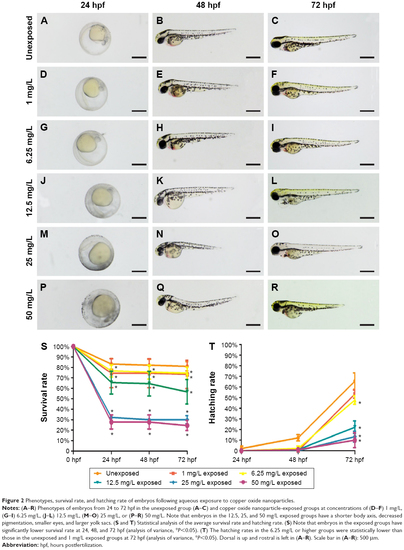Fig. 2
- ID
- ZDB-FIG-171110-23
- Publication
- Sun et al., 2016 - Effects of copper oxide nanoparticles on developing zebrafish embryos and larvae
- Other Figures
- All Figure Page
- Back to All Figure Page
|
Phenotypes, survival rate, and hatching rate of embryos following aqueous exposure to copper oxide nanoparticles. |

